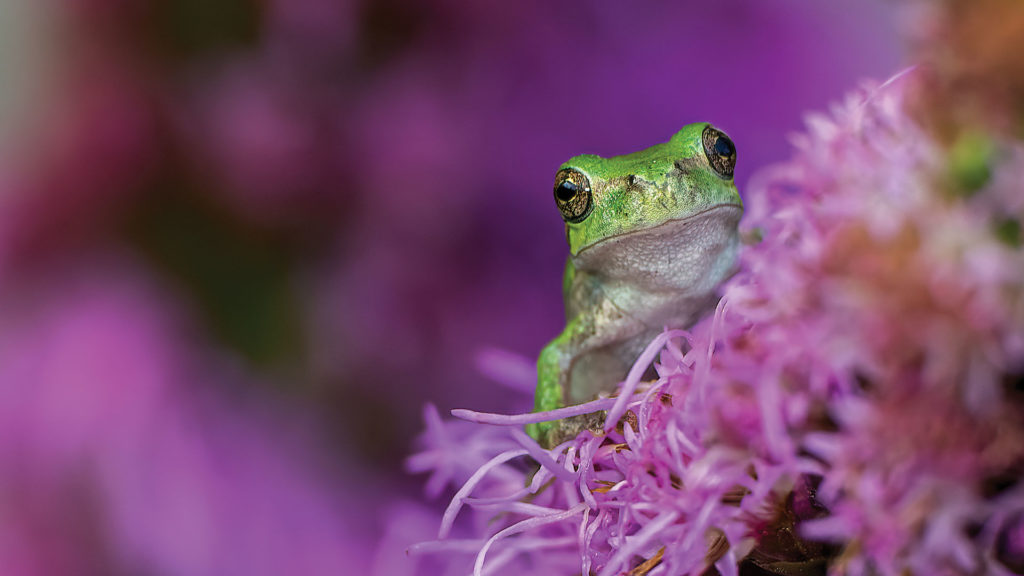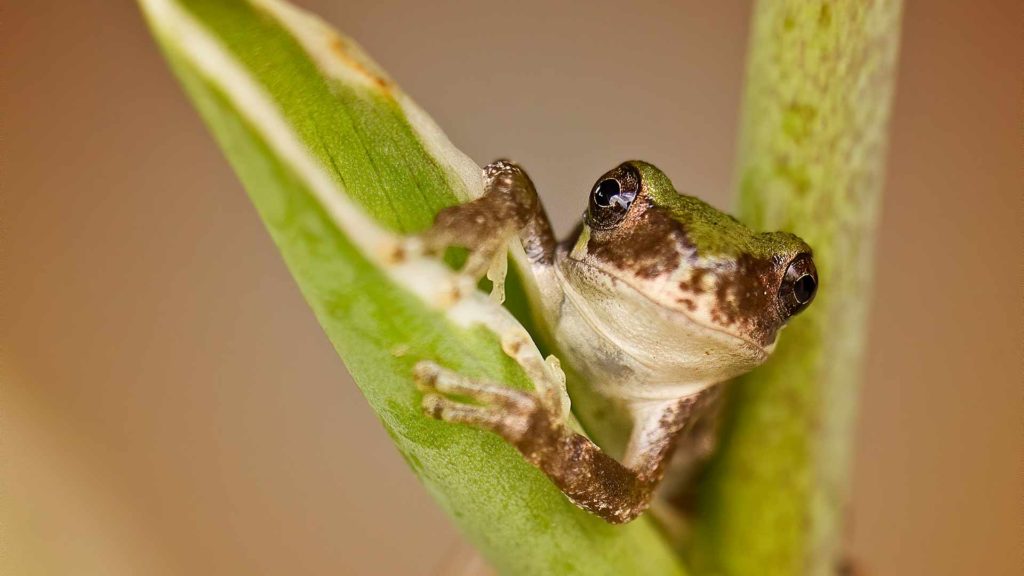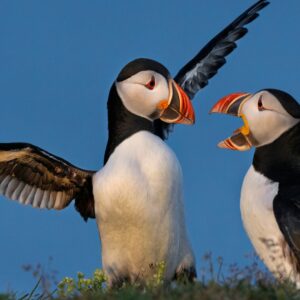Spotted: The Gray Tree Frog
The gray tree frog, also called hyla versicolor, can be found in parts of Canada and the United States. With colouring ranging from green to brown or gray, their rough warty skin texture gives these amphibians a tree-like appearance. This species of tree frog also has a chameleon-like ability to change colour, as its Latin name suggests.
The gray tree frog is a true “tree frog”, capable of climbing even the tallest trees. These small to medium-sized creatures can grow to up to 6cm in body length, prefer wooded habitats near sources of water, and spend the majority of their time in open canopy areas.

How to Identify a Gray Tree Frog
Besides their skin texture and colouring, gray tree frogs also sport dark blotches, sometimes with a distinct dark outline, on their backs. Sporting a white belly and bright yellow inner thighs, their distinct toe pads help differentiate them from your average toad. Gray tree frogs have a lifespan of up to seven to nine years. Male gray treefrogs also tend to be smaller than females, with an average difference of 0.25 inches in length.
Grey tree frogs (hyla versicolor) are closely related and identical to Cope’s gray tree frog (hyla chrysoscelis). Although these two species can only be differentiated by call, their genetic makeup is considerably different. Gray treefrogs have four sets of chromosomes while Cope’s only two.
In Canada, the gray tree frogs range from eastern Saskatchewan, southern Manitoba, northwestern Ontario, southern Ontario east of Lake Superior, southwestern Quebec and southern New Brunswick.
Did you know?
- Other similar-looking species include Spring peepers, Boreal Chorus Frogs, Western Chorus frogs and the Northern Cricket Frog
- Males are very territorial and will fight other males to defend their area. Fights between males are common and can last from 30 to 90 seconds
- Individual frogs hibernate by burying themselves on the forest floor
Daily habits and reproduction
Gray tree frogs are nocturnal species and prefer to hide in vegetation during the day, particularly in tree holes, rotten logs, under leaves, bark and tree roots. While their diet consists of insects, mites, spiders, plant lice, snails, and slugs, adult gray tree frogs are considered opportunistic feeders and will feed on smaller frogs if small enough to catch. As aquatic amphibians, they also eat algae as well as organic detritus commonly found in bodies of water.
Gray tree frogs are rarely seen outside of their mating season. With breeding occurring around late spring and early summer, males begin mating calls in spring shortly after emerging from winter hibernation. Gray treefrogs usually mate based on proximity; meaning males will call to females from surrounding trees and shrubs rather than travel long distances.
Spotted a gray tree frog? Show us your videos and photos by tagging us @naturecanada_ (Instagram) and @naturecanada (Facebook and Twitter).

Common threats and conservation status
In terms of conservation, gray tree frogs are labelled as a species of “least concern” on the IUCN red list. The current population trend of these amphibians is stable with conservation actions occurring in at least one protected area.
However, some common threats include hunting and trapping as well as the current conversion of wetland and forested areas to urban and agricultural areas. These shifts in anthropogenic land uses may eventually lead to the species’ habitat loss. In addition, gray tree frogs could potentially suffer from the threat of pathogens such as chytrid fungus and Ranavirus.
Find out what you can do to protect nature in Canada, subscribe for updates to learn more about our ongoing campaigns and be the first to know when it’s time to take action.



